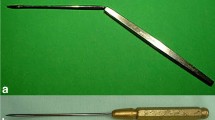Abstract
Background
Autologous fat grafting is a rapidly developing soft tissue filling technique that has been playing an increasingly important role in facial contouring and rejuvenation surgeries. However, this technique is accompanied by many side effects and risks. In particular, there is still much room for improvement in regard to the surgical method of temporal augmentation with autologous fat, which is highly popular among Chinese people. Better surgical methods can achieve better outcomes while curbing surgical risks.
Design and Methodology
We reviewed 39 patients who consecutively underwent subcutaneous temporal autologous micro-fat argumentation surgery at Peking University People's Hospital from February 19, 2016, to May 13, 2019, to correct temporal hollowness. Each patient’s Visual Analogue Scale (VAS) satisfaction score and Hollowness Severity Rating Scale (HSRS) score before and after surgery were precisely recorded, and any complaints about perioperative complications were meticulously collected to assess the efficacy and safety profile of the novel technique.
Results
All 39 patients included in this study were female. We performed 86 subcutaneous temporal autologous micro-fat argumentation surgeries, with an average follow-up of 20.4 ± 9.6 months. The average fat filling volume in the right temporal region was 6.29 ± 2.55 mL, and that in the left temporal region was 6.34 ± 2.71 mL. The average VAS satisfaction score increased from 4.44 ± 1.33 before the surgery to 8.08 ± 0.77 after the surgery, and the average HSRS score dropped from 1.82 ± 0.72 before the surgery to 0.36 ± 0.49 after the surgery. Four patients were encountered with minor complications of intraoperative bleeding and congestion, which were all completely ameliorated after conservative therapies.
Conclusion
In the present study, we found that the reported surgical method of subcutaneous temporal autologous micro-fat augmentation successfully improved the temporal hollowness of the patients, boasting good surgical results and high patient satisfaction with minimal short- and long-term complications, illustrating that it is an effective, safe and promising novel surgical technique worthy of wider clinical application.
Level of Evidence IV
This journal requires that authors assign a level of evidence to each article. For a full description of these Evidence-Based Medicine ratings, please refer to the Table of Contents or the online Instructions to Authors www.springer.com/00266.




Similar content being viewed by others
References
Sardesai MG, Moore CC (2007) Quantitative and qualitative dermal change with microfat grafting of facial scars. J Am Acad Otolaryngol Head Neck Surg 137:868–872
Frame JD (2018) The past, present, and future of facial fat grafting. Atlas Oral Maxillofac Surg Clin North Am 26:1–6
2018 Plastic Surgery Statistics Report. ASPS National Clearinghouse of Plastic Surgery Procedural Statistics. https://www.plasticsurgery.org/documents/News/Statistics/2018/plastic-surgery-statistics-full-report-2018.pdf
Fontes T, Brandão I, Negrão R, Martins MJ, Monteiro R (2018) Autologous fat grafting: harvesting techniques. Ann Med Surg 36:212–218
Simonacci F, Bertozzi N, Grieco MP, Grignaffini E, Raposio E (2017) Procedure, applications, and outcomes of autologous fat grafting. Ann Med Surg 20:49–60
Katzel EB, Bucky LP (2017) Fat grafting to the breast: clinical applications and outcomes for reconstructive surgery. Plast Reconstr Surg 140:69S–76S
Chen H, Zhang Q, Qiu Q, Yang Z (2018) Autologous fat graft for the treatment of sighted posttraumatic enophthalmos and sunken upper eyelid. Ophthal Plast Reconstr Surg 34:381–386
Maamari RN, Massry GG, Holds JB (2019) Complications associated with fat grafting to the lower eyelid. Facial Plast Surg Clin N Am 27:435–441
Li Z et al (2017) Panfacial fat injection approach in young Asian patients for facial contouring: a goal-oriented classification method based on the facial fat compartments theory. Plast Reconstr Surg 140:253–260
Francis A et al (2019) Enhancement of viable adipose-derived stem cells in lipoaspirate by buffering tumescent with sodium bicarbonate. Plast Reconstr Surg Glob Open 7:e2138
Khunkhet S, Rattananukrom T, Thanasarnaksorn W, Suchonwanit P (2019) Alopecia induced by autologous fat injection into the temporal area: case report and review of the literature. Case Rep Dermatol 11:150–156
Yu N-Z et al (2015) A systemic review of autologous fat grafting survival rate and related severe complications. Chin Med J (Engl) 128:1245–1251
Tzikas TL (2018) Fat grafting volume restoration to the brow and temporal regions. Facial Plast Surg 34:164–172
Moradi A, Shirazi A, Moradi J (2013) A 12-month, prospective, evaluator-blinded study of small gel particle hyaluronic acid filler in the correction of temporal fossa volume loss. J Drugs Dermatol 12:470–475
Huang R-L, Xie Y, Wang W, Tan P, Li Q (2018) Long-term outcomes of temporal hollowing augmentation by targeted volume restoration of fat compartments in Chinese adults. JAMA Facial Plast Surg 20:387
Huang R-L et al (2017) Anatomical study of temporal fat compartments and its clinical application for temporal fat grafting. Aesthet Surg J 37:855–862
Cervelli D et al (2014) Autologous fat transplantation for the temporalis muscle flap donor site: our experience with 45 cases. Head Neck 36:1296–1304
Lee S-S et al (2017) Long-term outcome of microautologous fat transplantation to correct temporal depression. J Craniofac Surg 28:629–634
James IB et al (2018) The architecture of fat grafting II: impact of cannula diameter. Plast Reconstr Surg 142:1219–1225
Kang D, Fu S, Luan J (2019) Which fat processing can achieve optimal transplantation in patients with insufficient fat resource? Ann Plast Surg 83:459–463
Sinno S, Wilson S, Brownstone N, Levine SM (2016) Current thoughts on fat grafting: using the evidence to determine fact or fiction. Plast Reconstr Surg 137:818–824
Author information
Authors and Affiliations
Corresponding author
Ethics declarations
Conflict of interest
The authors declare that they have no conflicts of interest to disclose.
Ethical Approval
This study was reviewed and approved by the Ethics Committee of Peking University People's Hospital. Each patient was fully informed of the procedure and the goal of the study and provided written consent.
Additional information
Publisher's Note
Springer Nature remains neutral with regard to jurisdictional claims in published maps and institutional affiliations.
Rights and permissions
About this article
Cite this article
Lin, Z., Yang, K., Li, G. et al. Efficacy and Safety of Subcutaneous Temporal Autologous Micro-fat Augmentation. Aesth Plast Surg 44, 2098–2106 (2020). https://doi.org/10.1007/s00266-020-01741-y
Received:
Accepted:
Published:
Issue Date:
DOI: https://doi.org/10.1007/s00266-020-01741-y




